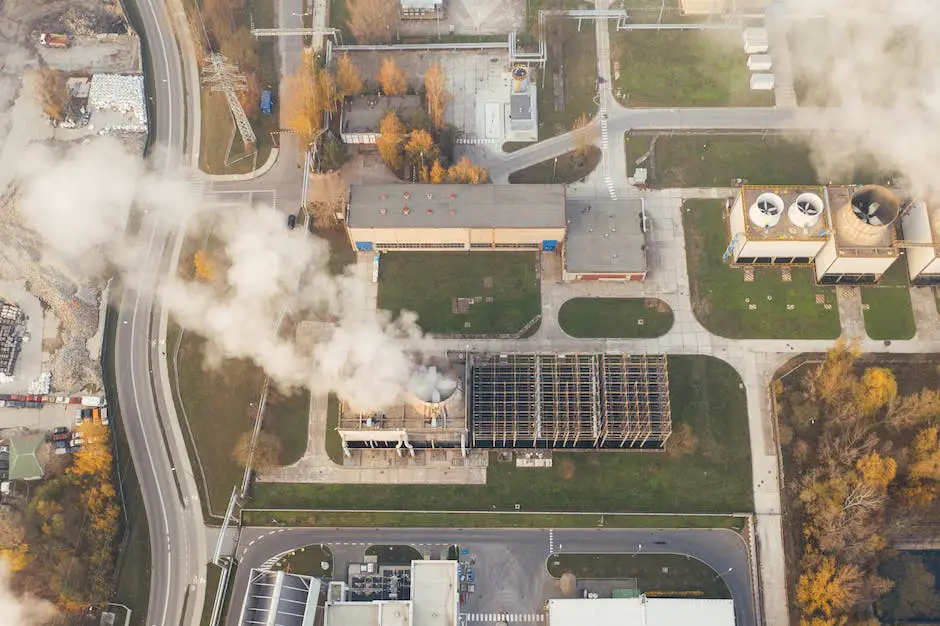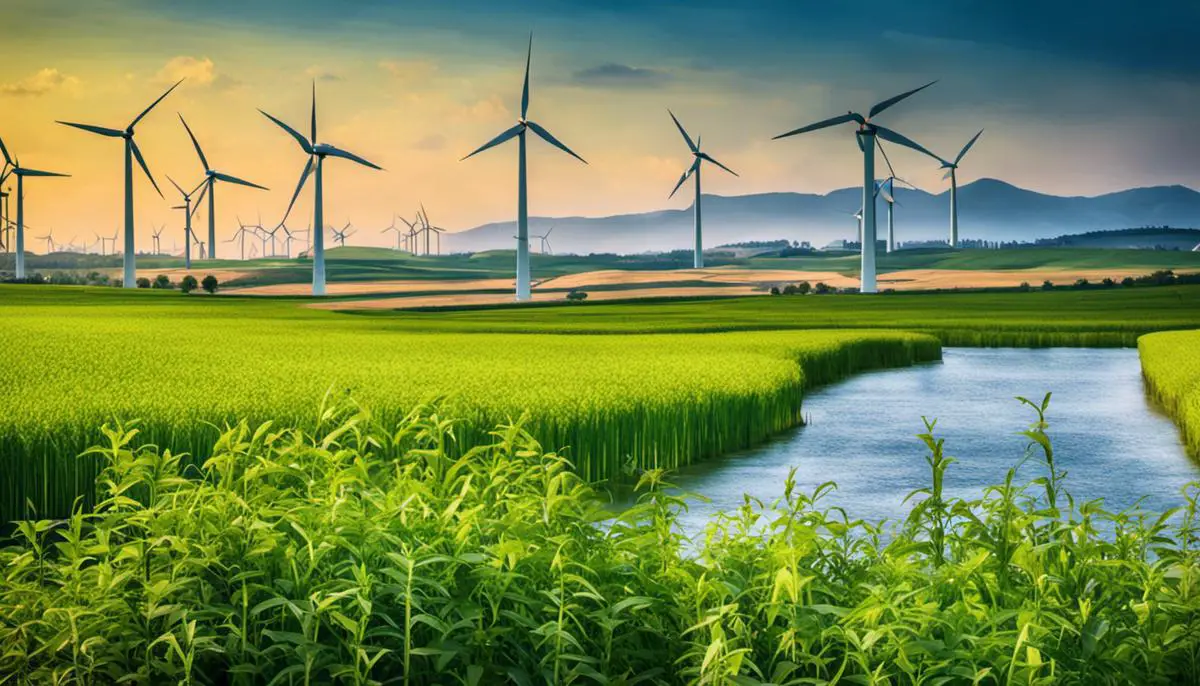In the era of climate consciousness, a shift from traditional fossil fuels to renewable energy sources is imperative. Among these renewable resources, biofuels stand as a promising alternative. Biofuel plants play a crucial role in the energy industry not only offering an abundant and renewable energy source but also aiding in reducing our carbon footprint. However, it becomes paramount to understand and control the emissions from these biofuel plants. This exploration is significant for balancing the environmental impacts while extensively harnessing the benefits of biofuels. We journey into this topic attending to the diversity of emissions produced, the varying levels contingent on plant size and type, and the resulting influence on our climate. We gain insights into the methods and technology applied currently for emission control and evaluate their efficacy. As we venture further, we scrutinize the regulations and policies in place, at both national and international levels, and the government’s role in policy enforcement, preparing a comprehensive overview of biofuel plant emissions and their control.
Overview of Biofuel Plants
Understanding Biofuel Plants
Biofuel plants, playing a pivotal role in the global energy industry, utilize organic materials such as crops, plant residues, waste, or dedicated energy crops to produce heat, electricity, or fuel. The convergence of biological and mechanical processes in these plants enables the conversion of first, second or third-generation feedstocks into bioenergy.
Biofuel plants vary greatly in design and functionality due to differences in feedstock type, operating procedure, and resultant energy form, whether that’s ethanol, biodiesel or a different type of bioenergy. However, on a simplified level, the general process begins with raw material harvesting, followed by the extraction of useful components and subsequent energy generation.
The Importance of Biofuel as a Renewable Energy Source
In the nexus of renewable energy, biofuel holds a significant place due to its ability to reduce reliance on finite fossil fuel reserves, which are linked closely with global climate change. This ensures that the source of energy is constantly replenishing, thus avoiding depletion.
Traditional fuels release carbon dioxide (CO2) when burned, contributing towards the greenhouse effect and global warming. However, biofuels offer a more environmentally friendly alternative, the CO2 released during the burning of biofuels is nearly equivalent to the amount absorbed by the plants during their growth. This closed carbon cycle makes biofuels a cleaner option for energy generation, potentially reducing our carbon footprint.
Emission Control in Biofuel Plants
However, despite the inherent renewable and carbon-neutral potential of biofuels, the operations of biofuel plants require rigorous emission controls. The energy generation from biofuels still produces emissions, such as nitrous oxides (NOx), sulfur dioxide (SO2), particulate matter (PM), amongst others, that may have detrimental impacts on the environment and human health.
Regulatory bodies have thus emphasized the need for biofuel plants to implement adequate emission control techniques, like Electrostatic Precipitators (EPs) and selective catalytic reduction (SCR) units. These can help remove particulates and convert NOx into harmless nitrogen and water.
Progress and Advancements in Emission Control
Scientific and technological advancements continue to forge a path towards improved emission control systems in biofuel plants, mitigating their environmental impacts. A promising development is the emergence of carbon capture, usage, and storage (CCUS) technologies. These systems trap the CO2 released during the process of bioenergy production and subsequently put it to use or safely store it. This significantly curtails the emission of greenhouse gases.
Moreover, techniques such as cogeneration (or combined heat and power, CHP) are gaining traction. Biofuel plants equipped with CHP systems generate electricity and useful heat simultaneously from the same energy source, thus enhancing efficiency and alleviating emissions.
The key to maximizing the environmental benefits of biofuels involves rigorous emission controls within biofuel plants. Aided by technological breakthroughs and strategic energy management, these actions have the potential to guide us towards a sustainable future.

Understanding Emissions from Biofuel Plants
Understanding Emissions from Biofuel Plants
Production by biofuel plants results in emissions predominantly composed of carbon dioxide (CO2), methane, amongst other greenhouse gases. The volume and species of these emissions are largely dependent on the plant’s size and the variety of biofuel produced. It’s essential to recognize that these emissions from biofuel plants play a role in augmenting the overall concentration of greenhouse gases in the atmosphere.
Quantifying Emissions
The exact quantity of emissions generated by a biofuel plant largely depends on its size. Larger plants process more biomass, leading to greater CO2 emissions. Conversely, smaller plants process less biomass, resulting in less carbon emissions. It is important to note that the absolute amount of emissions isn’t the sole factor to consider; the efficiency of the plant in terms of the amount of fuel produced per unit of biomass also plays a crucial role.
Types of Biofuels and their Emissions
Different types of biofuels also yield varying levels of emissions. Ethanol, a common biofuel derived from corn or sugar cane, often creates less CO2 compared to other biofuels, although the cultivation process can contribute a significant amount to its overall footprint. On the other hand, biodiesel, which is usually produced from vegetable oils or animal fats, generally results in higher emissions because of the energy-intensive extraction process.
Controlling Emissions from Biofuel Plants
A range of technologies are available to reduce emissions from biofuel plants, such as the use of carbon capture and storage (CCS) technology. CCS can significantly reduce CO2 emissions by capturing the gas at its source and storing it underground. This not only prevents the CO2 from entering the atmosphere but can also make the production of biofuels carbon neutral or even carbon negative under certain conditions.
Biofuel Emissions and Climate Change
Despite the emissions produced during the biofuel production process, biofuels have the potential to be a less carbon-intense alternative to fossil fuels, thus reducing their impact on climate change. However, it is crucial that the production process is managed in a sustainable manner that avoids deforestation, excessive use of fertilizers, and other practices that can increase overall greenhouse gas emissions.
Transitioning to eco-friendly biofuel, enhancing efficiency, and employing advanced emission control technology may provide a solution to the environmental challenges linked to biofuel production and use. Yet, it’s crucial that we continue to conduct in-depth research to fully comprehend biofuels’ environmental footprint. At the same time, we must pioneer innovative strategies to sustainably maintain the biofuel sector while adequately addressing our energy demands.

Existing Emission Control Technologies for Biofuel Plants
Top-tier Emission Control Technologies in Biofuel Plants
Contemporary biofuel facilities incorporate exceptional technologies designed to minimize detrimental emissions. One such technology encompasses combustion control systems. These systems expertly regulate the burning process of biofuels to not only maximize efficiency but also limit pollutant release. By meticulously managing the amount of oxygen in the combustion chamber and moderating the burn rate, these advanced techniques ensure that the emissions of harmful gases such as sulfur dioxide (SO2), nitrogen oxide (NOx), and carbon monoxide (CO) are significantly curtailed.
Carbon Capture and Storage
Another technology that assists in emission control is Carbon Capture and Storage (CCS). CCS technology captures CO2 emissions produced from the combustion of biofuels, then transports and stores them underground. This reduces the amount of CO2 released into the atmosphere, thereby mitigating the impact on the environment. The captured CO2 can also be utilized for enhanced oil recovery (EOR), creating a win-win situation where emissions are reduced, and oil extraction is made more efficient.
Catalytic Converters
Catalytic converters are integral to emission control in biofuel plants. They facilitate chemical reactions that transform harmful gases into safer substances. One common type of catalytic converter is a three-way converter used in vehicles. It facilitates three simultaneous reactions: the oxidation of carbon monoxide to carbon dioxide, the oxidation of hydrocarbons to carbon dioxide and water, and the reduction of nitrogen oxides to nitrogen and oxygen. In industrial settings, specially designed catalytic converters are used that can handle the higher volume and diverse mix of emissions.
Filtration Systems
Filtration systems serve as a physical barrier that traps particulate matter and prevents its release into the environment. They are necessary because biofuel combustion often generates particulate matter, which can have harmful health effects if inhaled. Modern filtration systems are incredibly efficient, able to remove up to 99.9% of particulate matter from the exhaust gases.
Effectiveness of Emission Control Technologies
Although these technologies are instrumental in reducing emissions from biofuel plants, they are not without limitations. Even with state-of-the-art equipment, it is nearly impossible to completely eliminate emissions. They do, however, significantly reduce the ecological footprint of biofuel production and ensure regulatory compliance.
Research into making these technologies more efficient is ongoing. Innovations such as the development of advanced catalytic materials and improved filtration methods continue to enhance the effectiveness of emission control technologies. Biofuel plants are also exploring options for re-utilizing byproducts, further minimizing waste and emissions.
In the bigger picture of their operational footprint, biofuel plants need to take into account the emissions associated with their supply chains. The methods used for cultivating and transporting biofuel feedstocks play a significant role in the total emissions output of the biofuel sector. Consequently, sustainable sourcing becomes an essential component of emissions control, thereby adding another layer to a comprehensive emissions strategy.

Government Regulations and Policies
Decoding Emission Control Measures in Biofuel Plants
Just like any other establishment involved in energy production, biofuel plants are also subject to a set of rigorous laws and guidelines regarding their emissions. These regulations are put in place to mitigate the environmental implications of these activities, a matter of utmost importance considering the industry’s function as a renewable alternative to fossil fuels. Emissions from these plants — encompassing a range of greenhouse gases, particle pollutants, and other harmful substances — can have detrimental effects on both the environment and public health once released into the atmosphere.
National Standards
In the United States, biofuel plants’ emissions are significantly regulated by the Environmental Protection Agency (EPA) under the Clean Air Act. This law requires that such facilities meet specific emission standards aimed at protecting the atmospheric air quality. The EPA sets National Ambient Air Quality Standards (NAAQS) for pollutants considered harmful to public health and the environment. These pollutants include particulate matter, ground-level ozone, carbon monoxide, sulfur oxides, nitrogen oxides, and lead. Biofuel facilities that fail to meet these standards face penalties, which may include fines and operational restrictions.
International Standards
Internationally, guidelines for emissions are primarily established by the World Health Organization (WHO), setting benchmarks for emissions that can affect human health. Additionally, the United Nations Framework Convention on Climate Change (UNFCCC) strives to limit greenhouse gas concentrations in the atmosphere. Biofuel facilities operating in countries party to this convention are required to adhere to these shared international standards.
Penalties for Breaching Regulations
Any biofuel plant that breaches these regulations faces severe penalties. The exact nature of the penalties depends on the extent and nature of the violation and can range from monetary fines to suspension or revocation of operating permits. Repeat offenders may be subject to escalating penalties, contributing to an enforcement framework designed to deter violations and encourage compliance.
The Role of Government
The government plays a critical role in enforcing these policies. At the national level, agencies such as the EPA monitor compliance with emission standards through regular inspections and audits. Violations can result in enforcement actions, which may be pursued through administrative, civil, or criminal avenues, depending on the severity and recidivism of the violation.
Internationally, governments work collaboratively through intergovernmental organizations such as the UN, WHO, and others, to create, implement, and enforce standards and regulations. These collective efforts aim to protect the global environment and promote the sustainable production of biofuels. As part of these international agreements, national governments are responsible for monitoring and enforcing compliance within their jurisdictions.
At the crux of the discussion surrounding emission control regulations for biofuel plants is a comprehensive legal framework put forth to mitigate environmental damage. Through stringent national and international sanctions, strict enforcement of penalties for non-compliance, biofuel plants are accommodated into a rigorous standard of operation. This is done with the intention to achieve our global objectives of diminishing emissions and fostering a healthier ecosystem.

Future Innovations and Sustainability
Understanding Emission Control in Biofuel Plants
Often, biofuel plants are lauded as a sustainable alternative to conventional fossil fuels, but they too can present environmental challenges. A significant concern is related to emissions that biofuel plants discharge into the atmosphere, which could potentially harm humans and the environment alike. Acknowledging these concerns, a burgeoning scientific community remains committed to researching and developing advanced emission control technology exclusive to biofuel plants.
Sustainable Innovations
One of the most promising advancements in this field is the use of air scrubbers. Air scrubbers neutralize harmful gases before they leave a plant and enter the environment. Equipped with various filtering and cleaning mechanisms, these scrubbers can remove up to 95% of the harmful particles in the plant emissions. This reduction allows biofuel to further establish itself as a cleaner energy alternative.
Another sustainable innovation in emission control technology is the use of biochar. Biochar is a product of pyrolysis, a process in which organic material is heated in an oxygen-free environment. When used in biofuel plants, it can capture carbon and other greenhouse gasses, preventing them from being released into the atmosphere.
The Benefits and The Challenges
The potential benefits of advancing emission control technology are vast. By reducing the emissions produced by biofuel plants, these technologies further enhance the environmental benefits of biofuels. This not only helps in combating climate change, but also fosters the well-being of communities around these plants by preventing air pollution-related health problems.
However, there are still challenges to be addressed. The installation and maintenance of emission reduction technologies can be costly, placing a financial burden on biofuel plant operators. Additionally, the usage of biochar and air scrubber systems relies on complex technology that requires specialized skills to operate and maintain. This places further demands on the biofuel industry, potentially slowing the adoption of these technologies.
Future Directions
Researchers are continually exploring affordable, effective emission control technologies for biofuel plants. The development of durable materials that can withstand high temperatures and corrosive gasses is particularly promising in this field. These materials could make systems such as air scrubbers more practical and affordable, further promoting their usage in biofuel plants.
Moreover, ongoing research into carbon capture and storage technologies could potentially make biofuels carbon-neutral or even carbon-negative. This could revolutionize the biofuel industry and make it an even more attractive option for sustainable energy production.
Despite the challenges, the advancements in emission control technology for biofuel plants hold great promise for a future of cleaner, sustainable energy. As research continues, the hope is for more viable and affordable solutions to be found that will further mitigate the environmental impact of biofuel production.

As we keep advancing technologically and more research is carried out, the field of emission control for biofuel plants promises continual evolution. A close examination of the developments heralds a future where we can hope to maximize the production of biofuels while keeping the emissions in check, paving the path for an environmentally conscious energy landscape. Generating this balance becomes central to maintaining the sustainability of biofuels as a key renewable energy player. Identifying and negotiating the potential benefits and challenges of these innovative interventions, we engage with our shared imperative of sustainable living and renewable energy use. Reflecting on this journey, one realizes the profound interconnectedness of our actions, choices, and their impacts – and the critical role of dynamic, informed decisions in shaping a balanced environmental trajectory. As the discourse around biofuel plants and their emissions control continues to expand and refine, everyone from policymakers to consumers has a role to play in this ongoing, vital dialogue.
Writio: Effortlessly generate high-quality content written by an AI, designed for blogs and websites. This article was crafted by Writio.




